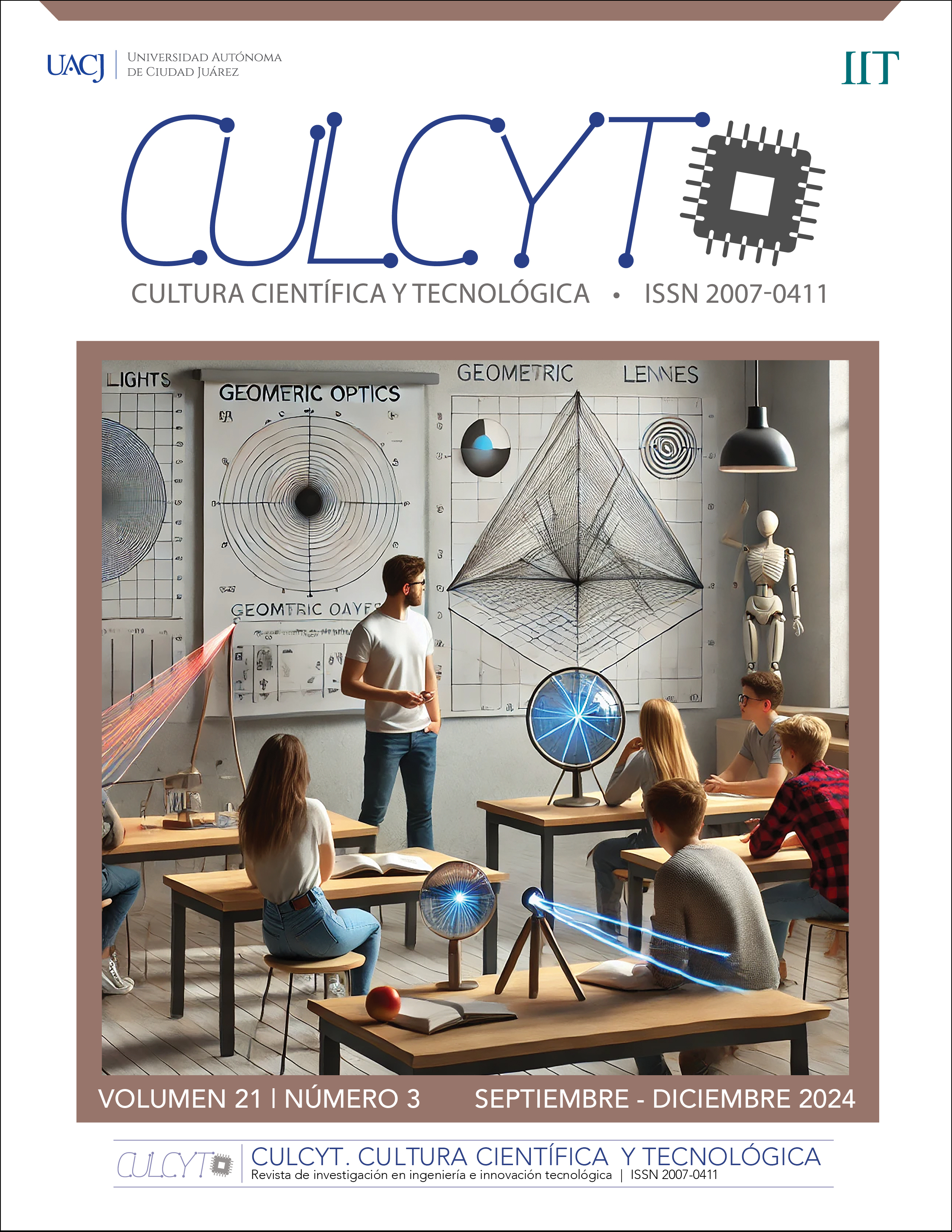Inclusion of women in physics classrooms in first-year engineering programs
DOI:
https://doi.org/10.20983/culcyt.2024.3.2e.6Keywords:
gender equity, higher education, formative evaluationAbstract
This work complements STEP UP's gender-focused communication manual by developing a complementary rubric. This rubric builds on the communication aspects outlined in the manual and quantifies them using achievement levels. This approach had yet to be proposed in any previous work related to STEP UP. The rubric and the communication manual are recommended as training tools for gender-focused communication in the physics classroom.
Downloads
References
ANUIES. “Anuarios Estadísticos de Educación Superior”. ANUIES.mx. Accedido: sept. 2, 2021. [En línea]. Disponible en: http://www.anuies.mx/informacion-y-servicios/informacion-estadistica-de-educacion-superior/anuario-estadistico-de-educacion-superior
European Commission. “Women in Digital Scoreboard 2020”. Europa.eu. Accedido: sept. 2, 2020. [En línea]. Disponible en: https://digital-strategy.ec.europa.eu/en/library/women-digital-scoreboard-2020
A. S. Rossi, “Women in Science: Why So Few?: Social and psychological influences restrict women’s choice and pursuit of careers in science”, Science, vol. 148, n.º 3674, pp. 1196-1202, May 1965, doi: 10.1126/science.148.3674.1196.
A. H. Eagly y V. J. Steffen, “Gender stereotypes stem from the distribution of women and men into social roles,” J. Pers. Soc. Psychol., vol. 46, n.º 4, pp. 735, 1984, doi: 10.1037/0022-3514.46.4.735.
N. Olmedo-Torre, F. Sánchez Carracedo, M. N. Salán Ballesteros, D. López, A. Perez-Poch y M. López-Beltrán, “Do Female Motives for Enrolling Vary According to STEM Profile?”, en IEEE Transactions on Education, vol. 61, n.º 4, pp. 289-297, nov. 2018, doi: 10.1109/TE.2018.2820643.
NU. CEPAL. “Mujeres y energía”. CEPAL.org. Accedido: sept. 2, 2020. [En línea]. Disponible en: https://www.cepal.org/es/publicaciones/45377-mujeres-energia
N. Merayo y A. Ayuso, “Analysis of barriers, supports and gender gap in the choice of STEM studies in secondary education”, Int J Technol Des Educ, vol. 33, n.º 4, pp. 1471-1498, nov. 2022, doi: 10.1007/s10798-022-09776-9.
R. Ivie y S. Guo, “Women Physicists Speak Again”, AIP Report, Statistical Research Center of the American Institute of Physics, rep. R-441, 2006.
B. J. Casad et al., “Gender inequality in academia: Problems and solutions for women faculty in STEM”, J. Neurosci. Res., vol. 99, n.º 1, pp. 13-23, 2021, doi: 10.1002/jnr.24631.
STEP UP. “About Overview”. engage.aps.org. Accedido: sept. 2, 2021. [En línea]. Disponible en: https://engage.aps.org/stepup/about/overview
Downloads
Published
How to Cite
Issue
Section
License
Copyright (c) 2024 Luisa Fernanda Chaparro Sierra, Manuela Ortiz Díaz, Claudia Bautista Flores, Carolina Berenice Rodríguez Garza, Santa Esmeralda Tejeda Torres

This work is licensed under a Creative Commons Attribution-NonCommercial 4.0 International License.
Todos los contenidos de CULCYT se distribuyen bajo una licencia de uso y distribución “Creative Commons Reconocimiento-No Comercial 4.0 Internacional” (CC-BY-NC). Puede consultar desde aquí la versión informativa de la licencia.
Los autores/as que soliciten publicar en esta revista, aceptan los términos siguientes: a) los/las autores/as conservarán sus derechos de autor y garantizarán a la revista el derecho de primera publicación de su obra; y b) se permite y recomienda a los/las autores/as agregar enlaces de sus artículos en CULCYT en la página web de su institución o en la personal, debido a que ello puede generar intercambios interesantes y aumentar las citas de su obra publicada.



